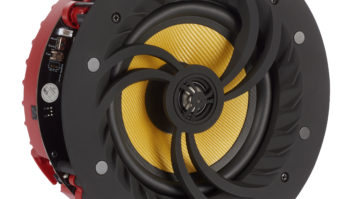New York – Russound sales and staff are growing again as the company prepares to expand its product selection beyond wired multi-room audio systems with centralized controllers to include decentralized IP-based wireless systems.
CEO Charlie Porritt said Russound is growing again not only because the home-building market has begun to turn around but also because the company is refocusing on its core multi-room audio competency, he said during an interview. “Before, we tried to be a systems-integration company,” Porritt said. Now, however, “we want to be really great at audio and integrate with other manufacturers’ home automation systems,” he explained. “We want to be the number one subsystem in a home automation system.”
As an example of movement in that direction, Porritt pointed to the planned July availability of Release 7 software for Russound’s DMS 3.1 digital-media streamer. The update will make it possible for electronics systems contractors to easily write code to integrate the device into other-brands home-automation systems, not just into Russound’s multi-room audio systems, he explained.
For the fiscal year ending mid-2013, the privately held company posted single-digit sales growth following four years of declining or flat sales, Porritt said. The company ended the fiscal year in the black, he added.
Russound had 150 employees at its peak in 2007 or 2008, after which the staff was cut, but in the past 18 months, the company has begun staffing up again and now has 65 employees, Porritt said.
Over the past year, the company added seven software and hardware engineers, and early this year Russound hired Jeff Myatt to fill the open position of product development manager. In April, Russound filled an open sales-training position by hiring Dave Davies, who joined sales trainer Jessica Elliott. On Monday, the company will fill the open position of marketing manager with the hiring of Brian Spielvogel.
Meantime, Russound has been developing wireless-audio solutions to meet market demand and accelerate growth, Porritt said. Those products will be available by the end of the year and will put in an appearance at the CEDIA Expo in September.
One of the products is the Xstream X5, a networked tabletop music-streamer/amplifier that can be used to create a 16-zone wireless-audio system if 16 X5 devices are added to a home network.
The system will be controlled from an iOS or Android app, and users will get the option to add control from one of three locally wired keypads already available from Russound for its centralized wired multi-room audio systems.
The device incorporates an audio amplifier to connect to passive speakers, preamplifier to connect to an outboard amp, Wi-Fi, Ethernet port, AirPlay, embedded music-streaming services and DLNA networking. It also features analog RCA and optical digital inputs to connect to a local source such as a TV.
Sources played back by one X5 can be distributed to other X5 devices. Such sources can include a smart TV’s music-streaming services if the X5 is connected to the TV’s audio outputs.
The X5 will help expand Russound’s consumer base to people living in apartments and condos who can take the products with them when they move, Porritt noted.
The XStreme X1, which will ship later than the X5, is designed as a wire-replacement product and consists of a wireless transmitter and wireless receivers. Some receivers will come with built-in amplifiers. The transmitter is designed mainly to connect to a single source. Applications include wireless surround speakers and extending a wired multi-room audio system into rooms where installers can’t run wires.
The wireless products will be sold through Russound’s current custom-install dealers and aren’t intended for over-the-counter sales, Porritt said.
Additional products details will be revealed at a later date, he added.










